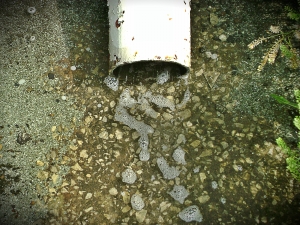 The growing strength of this year’s El Niño brings the promise of a wet winter. Amidst the excitement for much needed rain however, is the fear of the damage a good storm can cause. Our extended drought has made preparation even more necessary. Preparing your home for heavy rain now will save you time and money later.
The growing strength of this year’s El Niño brings the promise of a wet winter. Amidst the excitement for much needed rain however, is the fear of the damage a good storm can cause. Our extended drought has made preparation even more necessary. Preparing your home for heavy rain now will save you time and money later.
Here are a few things you can do to get your home storm-ready:
Trees are suffering from these dry conditions- many have become weak and some have already died. While a dead or weak tree may stay standing for quite a while, a good storm with heavy winds can knock it down. Take a look at the trees in your yard, if their leaves are turning brown, give them water. Have the branches trimmed and remove any limbs that are close to the side of your home. If you think one of your trees has died, have an expert take a look at it to see if it should be removed.
Drains near your home are in need of maintenance as well. The past few winters have brought little rain and your drains have likely filled with debris, and may have even become home to some small animals. Don’t expect the rushing water of a big storm to remove the debris, this must be cleared out before a storm to avoid large backups and flooding.
Roof and Gutter cleaning is a necessity before the rains hit to avoid damage and possible flooding in your home. At least twice a year, have a qualified service provider remove all leaves and debris from your roofs and gutters. Make sure the water drains properly not only at flat roof drains and scupper drains, but also on sloped roofs, around flashings, and all areas where water is channeled during heavy rains.
Windows and Doors need to be checked to ensure that they seal properly. Vacuum your window and sliding-door tracks periodically as leaking often occurs at the bottom corner joints of windows and sliding doors. Debris gets lodged in the track of a sliding frame or when the built-in weep holes are too small and prevents the door or window from properly closing to create a watertight seal.
Stucco/Siding should be sealed at any wall openings—hose bibs, light fixtures, windows and doors, while being careful to leave the release flashing undisturbed. Check the outside walls of your home for any openings in your stucco or siding.
Decks should be kept free of leaves and other debris. Patio-deck drains are typically small, meaning it’s easy for a single large leaf to block the drain.
Remember: projects that you’ll need a service provider for should be done first. As the rain season nears, these companies will become increasingly busy and you may not be able to get an appointment.
Check our blog next week for information on flood insurance and why you should consider getting coverage.

Follow us!
Twitter
LinkedIn